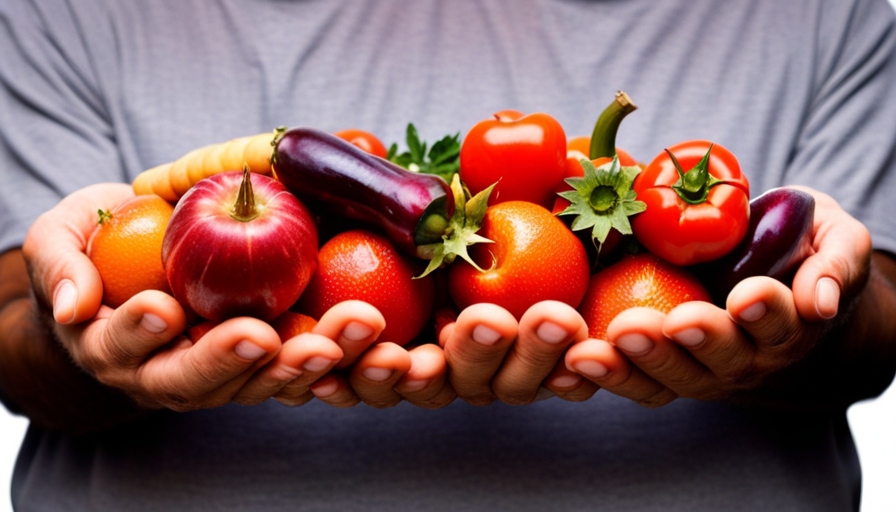In Australia, the land of golden sunrays caressing the rugged landscape, a unique culture has emerged and thrived. This culture centers around the love for coffee, a drink that has seamlessly woven itself into the fabric of Australian life.
From the bustling streets of Melbourne to the tranquil shores of Sydney, coffee shops and roasters have become the beating heart of Australian society.
The rise of Australian coffee culture is a testament to the tenacity and determination of a nation that refused to be limited by past failures. The industry, once plagued by unsuccessful coffee cultivation in the late 19th century, has undergone a remarkable transformation. With the advent of mechanical harvesting and the importation of Arabica coffee plant varietals, Australian coffee has found its place in the global market.
What sets Australian coffee apart is its unique flavor profile. With lower caffeine content and distinct notes of chocolate and nuts, each cup is a sensory experience like no other. The processing methods employed, ranging from dry processing to wet processing and the innovative double pass method, further contribute to the complexity and depth of the final brew.
While Australian coffee brands may be less prolific compared to their international counterparts, they have carved a niche for themselves in the industry. Names like Skybury Estate, Vittoria Coffee, and Mountain Top Coffee have become synonymous with excellence and quality.
As the Australian coffee industry continues to grow and evolve, the production and quality of Australian coffee beans are expected to reach new heights. With each sip, coffee connoisseurs around the world can witness the rise of a culture that has become an integral part of the Australian identity.
Key Takeaways
- Australia has a strong coffee culture, with a focus on coffee shops and roasters.
- Australian coffee beans are gaining momentum in the industry.
- Coffee cultivation in Australia started in 1880 but failed initially due to low-quality beans and expensive labor.
- The mechanization of the industry has led to less-than-ideal growing conditions, but Australian coffee industry remains strong and continues to grow.
History and Origins
The history and origins of Australian coffee culture can be traced back to the cultivation of coffee in the late 19th century, which initially failed due to low-quality beans and expensive labor, but was revived with the introduction of mechanical harvesting and the importation of Arabica coffee plant varietals.
This revival had a significant impact on the local economy, as it created job opportunities and stimulated agricultural growth.
Additionally, the influence of global coffee trends played a crucial role in shaping Australian coffee culture. The growing popularity of coffee consumption worldwide, particularly in countries like Italy and the United States, led to a greater demand for high-quality coffee beans.
This demand, coupled with Australia’s unique coffee culture and dedication to mastering coffee production, propelled the growth and development of the Australian coffee industry.
Coffee Production in Australia
Coffee production in Australia has experienced growth and development over time. Despite its small size compared to other coffee-growing regions, the Australian coffee industry has shown significant growth potential.
Challenges faced by coffee producers in Australia include the country’s lower altitude, which leads to a muted flavor profile in the beans. Additionally, the mechanization of the industry has resulted in less-than-ideal growing conditions. However, despite these challenges, the Australian coffee industry remains strong and continues to grow.
-
The industry has seen an increase in the number of coffee farms, particularly in New South Wales and Queensland.
-
Australian coffee producers have been experimenting with different processing methods, including dry processing, wet processing, and the unique double pass method.
-
The country’s coffee industry is still in its infancy, but the production and quality of Australian coffee beans are expected to rise over time as producers continue to refine their techniques and overcome challenges.
Unique Characteristics
Despite facing challenges such as lower altitudes and mechanization, the Australian coffee industry has shown significant potential for growth and development. Australian coffee varieties are unique and offer distinct flavors that contribute to the country’s coffee culture. The coffee beans grown in Australia tend to have a mild profile, making them best suited for medium roasts or darker. However, Mountain Top Coffee stands out as an exception, allowing for lighter roasts that bring out fruitier elements. Despite the relatively small size of the industry, the impact of coffee production on the local economy cannot be overlooked. Australian coffee farms, although small in scale, provide employment opportunities and support local communities. Additionally, the rise of Australian coffee brands, such as Skybury Estate and Vittoria Coffee, has brought recognition and international acclaim to the country’s coffee industry. With continued focus on quality and innovation, the production and reputation of Australian coffee are expected to grow in the coming years.
| Australian Coffee Varieties | Impact on Local Economy |
|---|---|
| Unique flavors and profiles | Employment opportunities |
| Mountain Top Coffee | Support for communities |
| Skybury Estate | Recognition and acclaim |
| Vittoria Coffee | Economic growth |
Notable Australian Coffee Brands
Notable Australian coffee brands thrive and tantalize tastebuds with their diverse offerings and exceptional quality. When it comes to the best coffee beans, Australian roasters have mastered their craft and offer a range of options that cater to different preferences.
One such brand is Vittoria Coffee, a family-owned company since 1958, which is known for its organic and Rainforest Alliance certified coffee. Supporting local industry, Vittoria Coffee sources its beans from Australian growers and ensures the highest standards of quality.
Another notable brand is Mountain Top Coffee, which offers Australian-grown green coffee beans from their farm. With three different options available, coffee enthusiasts can explore the unique flavors and profiles of Australian beans.
While Australian coffee production is still in its infancy, these brands exemplify the potential and growth of the local industry.
Brewing Recommendations
For optimal brewing results, it is recommended to match the roast level of Australian beans with the appropriate brewing method. Australian beans generally have a mild profile and are best suited for medium roasts or darker. To explore the flavor profiles of Australian coffee through different brewing techniques, alternative brewing methods can be used. Here are three popular options:
-
Filter Brewing: A Chemex or pour-over method is suggested for medium roasts. This method allows for a clean and crisp cup, bringing out the subtle chocolate and nutty notes of Australian coffee.
-
Steeping: For medium-dark roasts, a steeping method like a French press can be used. This method extracts more oils and flavors, resulting in a fuller-bodied cup with a hint of sweetness.
-
Espresso-based Options: Dark roasts are best brewed through espresso-based options. The high pressure and shorter extraction time highlight the bold and intense flavors of Australian coffee.
By experimenting with different brewing techniques, coffee enthusiasts can fully appreciate the unique flavors and characteristics of Australian coffee.
Frequently Asked Questions
What is the historical significance of Turkish coffee in Australia’s coffee culture?
Turkish coffee holds historical significance in Australia’s coffee culture. The cultural influence of Turkish coffee in Australia is evident in its consumption and presence in coffee shops. Turkish coffee’s unique preparation method, which involves finely ground coffee beans boiled in a small pot called a cezve, has been embraced by Australians.
The rich and strong flavor of Turkish coffee has found a place among the diverse range of coffee options available in Australia, contributing to the country’s thriving coffee culture.
How has the mechanization of the coffee industry affected the quality of Australian coffee beans?
The mechanization of the coffee industry in Australia has had a significant impact on the quality of Australian coffee beans. With the introduction of mechanical harvesting, there has been a shift towards larger-scale production, resulting in less-than-ideal growing conditions. As a result, some Australian coffee beans have a lower caffeine content and muted flavor compared to beans from other regions.
However, there are exceptions like Mountain Top Coffee, which can be roasted lighter to bring out fruitier elements. Overall, the rise of specialty coffee in Australia has led to increased focus on quality and the potential for improvement in the future.
What are some unique characteristics of Australian coffee beans that set them apart from other regions?
Australian coffee beans have unique characteristics that set them apart from other regions. In terms of flavor profiles, Australian beans tend to have lower caffeine content and exhibit flavors of chocolate and nuts. This can be attributed to the growing conditions in Australia, where coffee farms are small and located at lower altitudes. The lower altitude leads to a muted flavor compared to beans grown at higher altitudes.
However, Mountain Top Coffee is an exception, as their beans can be roasted lighter to bring out fruitier elements.
Can you recommend any notable Australian coffee brands besides Skybury Estate and Vittoria Coffee?
Notable Australian coffee brands, besides Skybury Estate and Vittoria Coffee, include Campos Coffee and Toby’s Estate.
Campos Coffee is known for its specialty coffee blends and single-origin beans, sourcing from different regions around the world.
Toby’s Estate is renowned for its commitment to sustainable practices and ethically sourced beans.
These brands have made significant contributions to the Australian coffee scene, offering a variety of flavors and profiles that cater to different preferences.
Turkish coffee, although popular in some countries, has had minimal impact on Australian coffee culture.
What brewing recommendations would you give for Australian coffee, particularly for different roast levels?
When brewing Australian coffee, it is important to consider the different roast levels and their corresponding flavor profiles.
For medium roasts, a filter brewing method such as a Chemex is recommended to bring out the nuanced flavors.
Steeping methods like a French press work well for medium-dark roasts, allowing for a fuller-bodied cup.
Dark roasts are best suited for steeping or espresso-based options to highlight the bold and intense flavors.
These brewing techniques help to enhance the unique characteristics of Australian coffee at different roast levels.
How has the Coffee Culture in Australia Evolved Over Time?
Australia’s coffee culture has grown exponentially over the years, embracing the enchanting world of coffee. From traditional Italian-inspired espresso bars to specialty cafes offering unique brewing methods, Australians have developed a sophisticated palate for high-quality coffee. This evolution has transformed coffee into a social and cultural phenomenon across the country.
Conclusion
In conclusion, the burgeoning Australian coffee culture has reached new heights, defying its historical setbacks. The industry has flourished with the aid of innovative techniques and the introduction of Arabica varietals.
Australian coffee beans have captivated the industry with their unique attributes, including lower caffeine content and delightful flavors of chocolate and nuts. Notable Australian coffee brands such as Skybury Estate, Vittoria Coffee, and Mountain Top Coffee have emerged, representing the country’s commitment to excellence.
As the industry continues to mature, the production and quality of Australian coffee beans are poised to soar to even greater heights.










